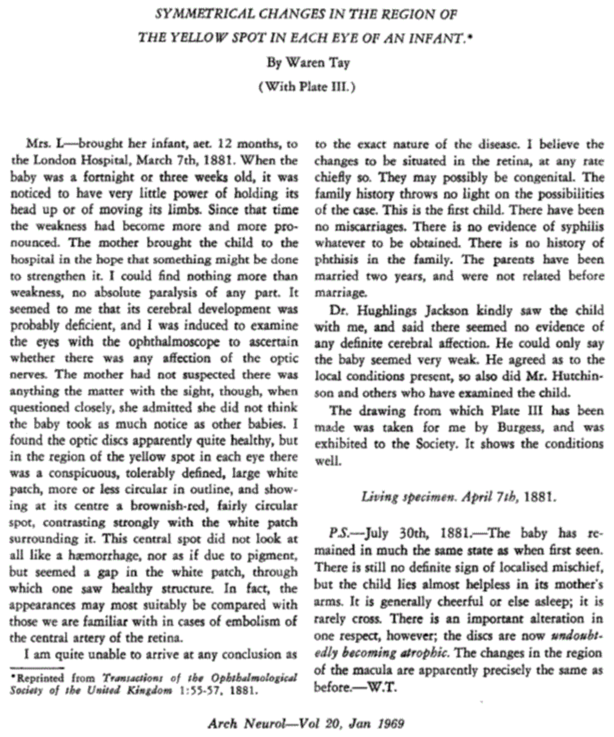Index
In 1881, British ophthalmologist Warren Tay published his groundbreaking observation of a cherry-red spot on the retina of a child suffering from a neurological disorder. This momentous discovery marked the first description of what would later be known as Tay-Sachs disease, a rare and fatal genetic disorder affecting infants. Tay's keen observation laid the foundation for significant advancements in the field of pediatric neurology. In the late 19th century, the medical community was just beginning to explore the complexities of neurological disorders. The prevailing understanding of such conditions was limited, and many were often misdiagnosed or attributed to vague etiologies. It was within this context that Warren Tay made his pivotal observation.
Warren Tay's Discovery
Warren Tay, an accomplished ophthalmologist, noticed an unusual cherry-red spot on the retina while examining a young child with progressive neurological decline. He meticulously documented this finding, recognizing its potential significance. Tay's observation was revolutionary, as it provided a tangible, clinical sign that could be associated with a specific neurological condition.
Bernard Sachs' Contribution
Several years after Tay's discovery, American neurologist Bernard Sachs expanded upon Tay's work. Sachs provided a comprehensive description of the disease's clinical features, including the progressive weakness, loss of motor skills, and severe neurological deterioration observed in affected children. He also identified the hereditary nature of the disorder, noting its prevalence in certain populations, particularly among Ashkenazi Jews.
Understanding Tay-Sachs Disease
Tay-Sachs disease is caused by a deficiency in the enzyme hexosaminidase A, leading to the accumulation of GM2 ganglioside in nerve cells. This buildup results in the destruction of these cells, causing the severe neurological symptoms characteristic of the disease. Infants with Tay-Sachs typically appear normal at birth but begin to show symptoms by six months of age, including developmental delay, motor weakness, and seizures. The disease progresses rapidly, often leading to death by the age of four.
The identification of Tay-Sachs disease had a profound impact on pediatric neurology. It highlighted the importance of genetic factors in neurological disorders and spurred further research into the genetic and biochemical underpinnings of such conditions. Tay's and Sachs' contributions paved the way for advancements in diagnostic techniques, genetic counseling, and carrier screening, particularly in populations at higher risk for the disease.
Current Research and Treatment
Today, research into Tay-Sachs disease continues, with scientists exploring potential treatments such as gene therapy, enzyme replacement therapy, and substrate reduction therapy. While a cure remains elusive, these efforts represent significant strides towards improving the quality of life for those affected by the disease.
Legacy
The discovery of Tay-Sachs disease by Warren Tay in 1881, remains a landmark event in the history of medicine. It underscores the importance of detailed clinical observation and the collaborative nature of scientific progress. The work of Tay and Sachs continues to influence the field of pediatric neurology, offering hope for future breakthroughs in the diagnosis and treatment of genetic neurological disorders.


